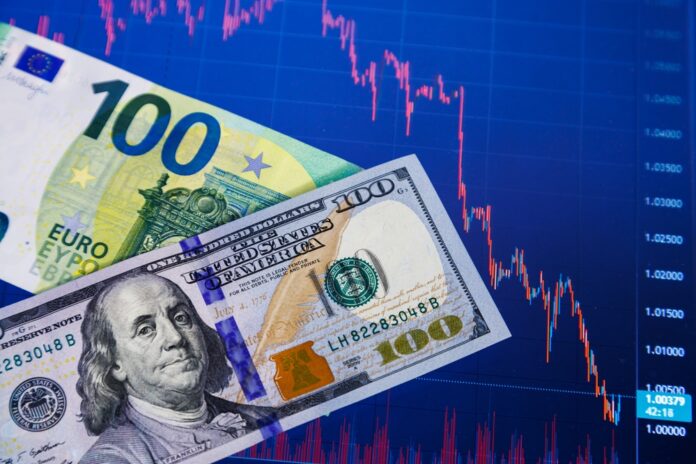The U.S. dollar extended its decline on Wednesday, weighed down by growing concerns over the Trump administration’s escalating trade war, while the British pound and euro advanced despite mixed economic data.
As of 04:40 ET (08:40 GMT), the Dollar Index — which measures the greenback against six major currencies — fell 0.5% to 99.452. The index has now dropped over 8% year-to-date.
Dollar Slumps Amid Trade Tensions
The greenback’s weakness deepened after U.S. President Donald Trump launched a new probe into tariffs on all critical mineral imports — many of which come from China — intensifying the ongoing trade conflict between the world’s two largest economies.
Earlier this month, Trump raised cumulative tariffs on Chinese imports to 145%, prompting a sharp 125% retaliatory response from Beijing.
Investors are also awaiting data on China’s holdings of U.S. Treasurys, due later in the day. While analysts at ING expect no major change in China’s $760 billion portfolio, a surprise sell-off could trigger further pressure on U.S. bonds and the dollar.
Additionally, upcoming U.S. retail sales data and a speech by Federal Reserve Chair Jerome Powell will be closely watched. This follows dovish comments from Fed Governor Christopher Waller on Tuesday, which have already stirred expectations of a more accommodative Fed.
“With long-term inflation expectations dipping to new lows, a dovish tone from Powell could further weigh on the dollar,” ING noted.
Euro Strengthens Ahead of ECB Decision
EUR/USD rose 0.7% to 1.1364, recovering after last week’s pullback from a three-year high of 1.1474.
Markets now await Eurozone inflation figures, which are expected to show annual price growth slowing to 2.2% in March, down from 2.3% in February. A softer print could pave the way for the European Central Bank to cut interest rates by 25 basis points on Thursday, bringing the deposit rate down to 2.25%.
“EUR/USD may have already established a short-term low and could be on its way to test 1.1500,” ING said.
Pound Rises Despite Soft U.K. Inflation
GBP/USD climbed 0.5% to 1.3283, hovering near a six-month high, even as U.K. inflation slowed in March.
The Consumer Price Index rose just 2.6% year-on-year, down from 2.8% in February and below expectations of 2.7%. The Bank of England held interest rates at 4.5% in March with an 8-1 vote, though softer inflation increases the chance of a rate cut in May.
Still, the pound’s gains remain driven by broader dollar weakness. “GBP/USD is being lifted by the soft dollar narrative and is eyeing last year’s high of 1.3430,” ING noted.
Yuan Struggles Despite Strong Chinese Growth
In Asia, USD/JPY fell 0.5% to 142.49 as the yen benefited from safe-haven flows.
USD/CNY edged up 0.1% to 7.3236, with the yuan under pressure from ongoing U.S.-China tensions. However, Chinese economic data surprised to the upside:
Retail sales rose 5.9%, boosted by government stimulus.
GDP grew 5.4% year-on-year in Q1 2025, beating the forecast of 5.2%.
Industrial production surged 7.7% in March as exporters rushed shipments ahead of steep new U.S. tariffs taking effect April 2.



